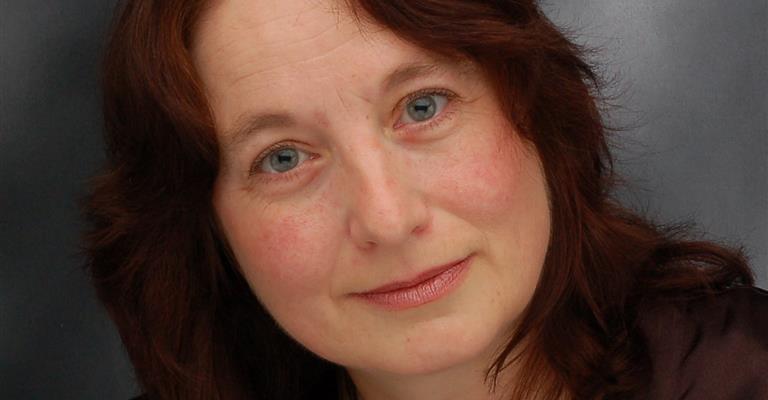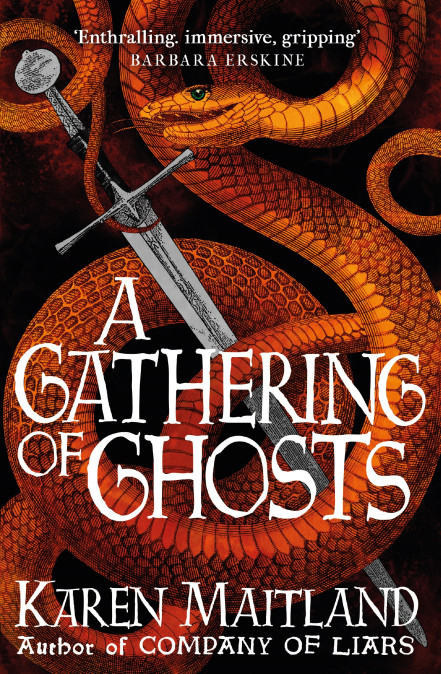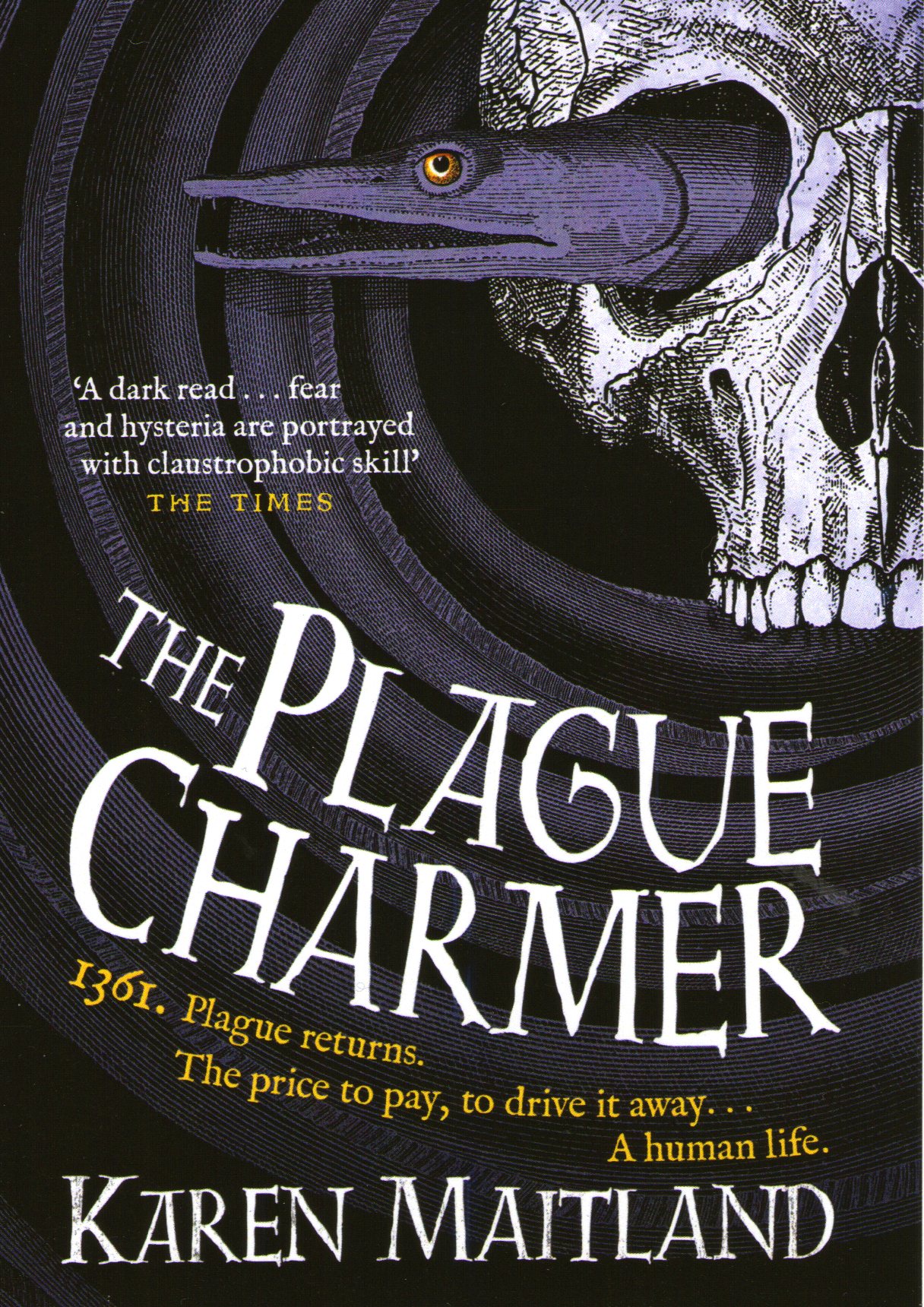
Karen Maitland serves up a Medieval mystery
The author of gripping historic thrillers explains the vital roles that the landscape and physical artefacts play in spinning a good yarn.
Karen Maitland is the author of over 20 Medieval mysteries and thrillers including A Company of Liars and A Gathering of Ghosts. She has also published as part of the 'Medieval Murderers' troupe of writers and holds a doctorate in psycholinguistics. In this exclusive interview, Karen explains why she thinks Time Team should return and reveals an intriguing fantasy dig site in Somerset – it's another Medieval mystery!
What is it about the Medieval period that particularly interests you as an author?
“It has many parallels to the time we are living in now. It was a time of dramatic and rapid climate change, causing the same extremes of weather that we are experiencing – massive droughts and flooding leading to widespread crop-failure and famine. At the beginning of the 14th century, climate changes were so noticeable right across Europe that the Pope ordered that special prayers be said daily in every church. The Middle Ages suffered an onslaught of deadly new pandemics, which had devastating economic consequences and caused far-reaching social change. But it was also a time when many women had opportunities which they have only regained in the last century – they could become physicians; they wrote medical textbooks still in use centuries after women were barred from the practising of medicine; they ran vast estates equivalent to today’s multinational companies and studied at universities, where, in southern Europe, Christians, Muslims and Jews learned side by side.
“But the other aspect of the Medieval period that fascinates me is the mindset of the time; the way in which the supernatural was seen as part of the natural world. Astrology was studied as integral to medicine and religion. The builders of the great Cathedrals had astounding mathematical and engineering skills, but would not cut the first turf unless the day was deemed auspicious. It is difficult for a 21st century reader to enter into the Medieval mind, but this is where the parallel situations between what they were experiencing and what we are living through can become the port-key that transports us into their world. Once we identify with their fears and emotions, we can find a way to begin to understand their world.”
While your novels vividly capture the magic, superstition and beliefs of the age, room is left for the reader to interpret events within a modern context. How do you approach that interplay between fact and fiction; historic perspectives versus those of today? The idea of two or more simultaneous layers of truth to the story...
“It is not our observations of the world which become our ‘truth’ or our ‘facts’, but how we interpret those observations and that interpretation changes throughout history. What our Medieval ancestors saw and believed shouldn’t be dismissed as fantasy, naivety or gullibility. Their observations were probably accurate and correct. They saw what we see, but it is our interpretation which is different.
"I try to present the kind of supernatural events in my novels for which there could be a scientific explanation while showing that event through the Medieval character’s eyes. In this way, I hope to make the point that what the Medieval people saw, heard, or felt was ‘real’ not fantasy. It has been simply been understood in different ways down through centuries. Our descendants might yet come up with another explanation for these events which we haven’t even dreamed of.”
Time Team's recent book, Dig Village discusses how myths and legends can be a fruitful theme for framing local history research. Your books often draw on local legends, such as the 'Owl Man' in The Owl Killers. Why do these myths still matter today, and what can they tell us about our forebears – and ourselves?
 “The Owl Man was a Medieval monster who would swoop down from church towers to seize its human prey. Some Medieval churches were built over, or near, ancient pre-Christian sacred sites such as caves or springs, thought of as entrances to the underworld, where spirits of air and water met. The monster myths associated with these churches may reflect the demonising of these pre-Christian gods. But I think the persistence of these myths reveal far more than that. In Falcons of Fire and Ice, I drew in part on the legend of the draugr, an animated corpse, one of the undead, which appears in sagas from all over Europe as early as the 8th century. I think the draugr, like the Owl Man, is the embodiment of the primeval fears that still haunt us today. Turning the invisible terror into a tangible monster, something that can be seen and fought off, a creature who can be defeated, gives us back some sense of control.
“The Owl Man was a Medieval monster who would swoop down from church towers to seize its human prey. Some Medieval churches were built over, or near, ancient pre-Christian sacred sites such as caves or springs, thought of as entrances to the underworld, where spirits of air and water met. The monster myths associated with these churches may reflect the demonising of these pre-Christian gods. But I think the persistence of these myths reveal far more than that. In Falcons of Fire and Ice, I drew in part on the legend of the draugr, an animated corpse, one of the undead, which appears in sagas from all over Europe as early as the 8th century. I think the draugr, like the Owl Man, is the embodiment of the primeval fears that still haunt us today. Turning the invisible terror into a tangible monster, something that can be seen and fought off, a creature who can be defeated, gives us back some sense of control.
“In A Gathering of Ghosts, I wove in the legend of the Wisht Hounds or hellhounds, a pack of huge black dogs with savage fangs and red eyes that hunt across Dartmoor at night. The hounds’ kennels are said to be in Wistman’s Wood, an ancient grove of twisted oaks. The pack are led by a spectral huntsman, claimed in some legends to be Old Crockern, an ancient god or guardian spirit of Dartmoor, whose face can be seen in profile on the rocks of Crockern Tor and who releases the hounds whenever someone threatens the moor. This myth, I think, embodies the deep-seated hope that we share with our Medieval forebears, that at times of real danger something or someone will come charging to our defence in the nick of time, whether it’s King Arthur and his knights woken from their enchanted sleep or a pack of spectral hounds. The innocent will be saved and dastardly villains will meet a sticky end. Fantasy films and games – in which heroes fight with or against monsters, demons, zombies and every kind of supernatural creatures – show that we still crave these stories. At times of crisis, the sales of these games rocket because we are no different from our forebears. We need to have that illusion of control over our unpredictable world.”
Company of Liars and The Plague Charmer are set around the time of the plague. 2020 has been characterised by the worldwide Covid-19 pandemic, with wide-ranging and often devastating consequences for many. While these pandemics are very different in many respects, have you observed any parallels or contrasts?
“I am repeatedly struck by the parallels between the Medieval reaction to the Black Death and ours to Covid-19. Just as in the 14th century, we have witnessed the panic buying and stockpiling of food (and weapons in the US); communities shutting themselves off from any strangers and travellers who might bring the disease in, and attacks on those trying to minister to the sick for fear they might spread it. And just as we saw in the Middle Ages, there are groups of people who take the view that if they ignore it and don’t think about it, it won’t affect them.
“Much has improved, but Government measures to control Covid-19 are in many ways very similar to those taken by Medieval governments. In 1361, King Edward III tried to contain the plague by suspending parliament, closing theatres and entertainments and banning the slaughter of animals at Smithfield. Ships were refused permission to dock at ports and sulphur was burned in the streets and public places – the Medieval version of spraying with disinfectant. While apothecaries frantically worked on developing potions to protect against it, the nobility and those who had second homes and palaces in the countryside went off to self-isolate with their families there.
“As a novelist, I've always tried to free myself from hindsight and try imagine what the Black Death was like for people at the time who didn’t know if this was the end of the world. Since the outbreak of Covid-19, I think I have a greater understanding of just how helpless those facing the plague must have felt, how they clutched at anything that might fend it off. But one thing I hadn’t fully appreciated before was how desperate they must have been during the Black Death for news, any news, of what was happening elsewhere. Seeing people in lockdown obsessively watching the daily Covid-19 briefings, anxiously following the latest daily figures and logging onto the internet for the news a dozen times a day, makes me realise how frightening the ‘not-knowing’ must have been for people in the Middle Ages.”
What kinds of sources do you draw upon when researching a novel? How important is the physical record as well as the documentary one?
“I use academic history books to get feel for the period, the political and social issues. Then I move on to local records – church, manorial records and even to more recent documents, such as local history books written in the 19th century from local history archives. They often give you the end of the thread of information which you can try to trace back.
"When I was writing Company of Liars, I found an old book of local legends in a second hand bookshop in Krakow which recounted the legend of the beggars’ wedding – a superstition used to ward off the plague. Returning home, I followed the thread back through local history records found that many English parishes had also held beggars’ weddings to ward off the Black Death in the 14th century. So, that became an important scene in the novel.
"Visiting local museums to look at artefacts is also a key part of my research. The tiny golden boar which one of the Medieval characters finds in a Saxon burial urn in The Vanishing Witch was inspired by seeing this beautiful little Saxon treasure in the museum in Lincolnshire.
"But locations are always key to my research. St Oswald’s Church, high on the hill at Lythe, Yorkshire looks out to the sea and across the bays to Whitby Abbey. It a remarkable little church, built on the site of a double monastery, probably constructed around the time of the abbey on St Hilda in Whitby, around 657AD. After destroying the abbey of St Hilda, the Vikings eventually settled around Lythe and buried their dead on the site of the present church. In 1910, builders discovered 37 stones thought to be from this Viking graveyard built into the church walls, which have amazing carvings of beasts, as well as a man with arms outstretched and his hands in the mouths of two wolves. It was seeing these remarkable stones in the context of the landscape and sea that gave me the idea for the prologue story for the Medieval Murderers book, The False Virgin. The carvings on those stones against that landscape instantly conveyed the pagan-Christian mindset, and the terror and the conflict of that period in a way that no written record ever could.
“Fifty years ago, most readers of historical fiction learned their history from textbooks. Now, thanks to programmes like Time Team and to the great resurgence of interest in local history research, readers are much more interested in physical evidence and in place. They like to be able to actually walk in the footsteps of the historical characters and see the traces of buildings the characters, real or fictional would have seen. I was very fortunate in that Lincoln, where I set The Vanishing Witch, has so many Medieval buildings and streets still remaining, so that readers can walk where my characters walked, and even, if they are brave enough, climb the haunted Medieval Greenstone or Greesen steps where a spectral hand reaches out to grab the ankle of the unwary and brings them crashing down.
“But the area around old port of Lincoln, Brayford Pool, and Broadgate has been extensively rebuilt, so without any map of the 1380s for that area, I invented a track to a large warehouse on the quayside, where several important scenes in The Vanishing Witch take place. Then just after I finished writing the novel, a local journalist rang to tell me that an archaeological dig, which been taking place on the site of an office extension, had reveal a Medieval track leading to what they thought was a Medieval warehouse on the wharf. It was just where I had put my imagined path and warehouse. I was so delighted because I felt I had kept faith with my readers and now I had the evidence.”
If you had Time Team's resources to dig any historic site, what would you choose?
“Many of the scenes in The Plague Charmer, set in 1361, take place in the mysterious village of Kitnor (now called Culbone) in an isolated forested valley in Somerset. Culbone has the ‘smallest complete parish church in England’ which you can visit by walking through the forest from Porlock Weir. The church is perched 400ft above the wild and dramatic Exmoor coast. It still retains its 12th century walls and parts of the nave are Saxon, dating back before 1066.

"Legend has it that this hidden valley was first inhabited in 430AD by seven monks from a Celtic monastery in Wales who sailed across by boat, giving it the name Kitnor meaning the 'place of the cave'. The monks lived as a community of hermits, in individual stone bee-hive shaped huts, the ruins of which were re-used for centuries, long after the monks left or died out around 518. The Celtic monks might have been lured to the place by the fires or torches lit by the worshippers of the old gods, which would have been visible from the coast of Wales just across the narrow stretch of sea, for Kitnor was believed to have been a sacred valley in pre-Christian times.
"Along what was once the old track to Kitnor is a line of ancient stones, known as the Culbone Stones, some carved with bisected circle symbols, which may have once led to a stone circle or even to Kitnor itself. These stones are thought to have been erected around the time of their giant cousins at Stonehenge. Some of Culbone's stones still stand, but many more are thought to have fallen and been buried or even incorporated into local buildings.
"A hundred years before my novel is set, Kitnor was used as a place of banishment for heretics, witches and those deemed to be mad. They were said to have lived in the stone beehive huts surrounding the tiny church. The settlement fell into ruins, but in 1385, it was used as a penal colony for male criminals banished there for crimes such as theft and adultery. Left to fend for themselves, many committed suicide. It was closed as penal colony in 1478, but in 1544 became a leper colony. In the final bizarre twist, there is a story that 38 men from India were brought here to work as charcoal burners for 21 years, receiving supplies in exchange for the charcoal via ropes lowered over the cliffs. If this is true, what mark did they leave on this valley?
"Legend has it that Culbone is riddled with an ancient system of caves, one which of lies beneath the church. The cave was once deemed sacred, so did whoever shaped the Culbone stones centuries before use the cave for worship? Why were the stones erected in this place? A stream runs through the valley, but was there once a sacred spring or underground pool into which they might have cast votive offerings? Could the cave or valley have been used in pre-Christian funeral rites? I would love to see if a dig could uncover some of the layers of mystery that still haunt this valley.”
Did you ever watch Time Team and would you like to see it return?
“I loved Time Team because the series didn’t just set out to answer questions about the sites – Was there once a wooden henge here? – they brought the places and period alive. It felt as if you were watching a village, abbey or a boat rise from the earth as they uncovered and explained it. We saw sketches or computer generated images of how it might have looked, but more importantly for me as an author, was seeing how big that abbey or industrial building was because Time Team were walking around in the remains, pointing out where walls and doors would have been and I could picture my characters in it. It was brilliant when they found evidence to prove a local story was true and even more exciting when they discovered something they hadn’t expected.
“The programme also taught me how to look for clues in the most unlikely places. There was one programme where they were trying to uncover evidence of a Medieval boatbuilding site in Smallhythe. They were getting nowhere until they examined an old door in the church decorated with Medieval ship’s nails which could only have come from a boatbuilders’ yard. It taught me to keep my eyes and mind wide open – the evidence could be anywhere. And again, as a writer it was so useful to see Time Team using written records alongside the digs, and showing how each illuminated the other.
“We do need Time Team back, not only because there are so many unanswered questions about our history still to be explored but also to inspire the next generation who will only care about history and want to protect sites if they are fired up with excitement of what might waiting to be discovered. History is not a story we’ve finished; it’s a book we have only just begun to read.”
Find out more about Karen on her official site: www.karenmaitland.com
We eagerly await Karen's upcoming novel, The Drowned City, due to publish in April 2021 via Headline Review, writing as K.J. Maitland.
